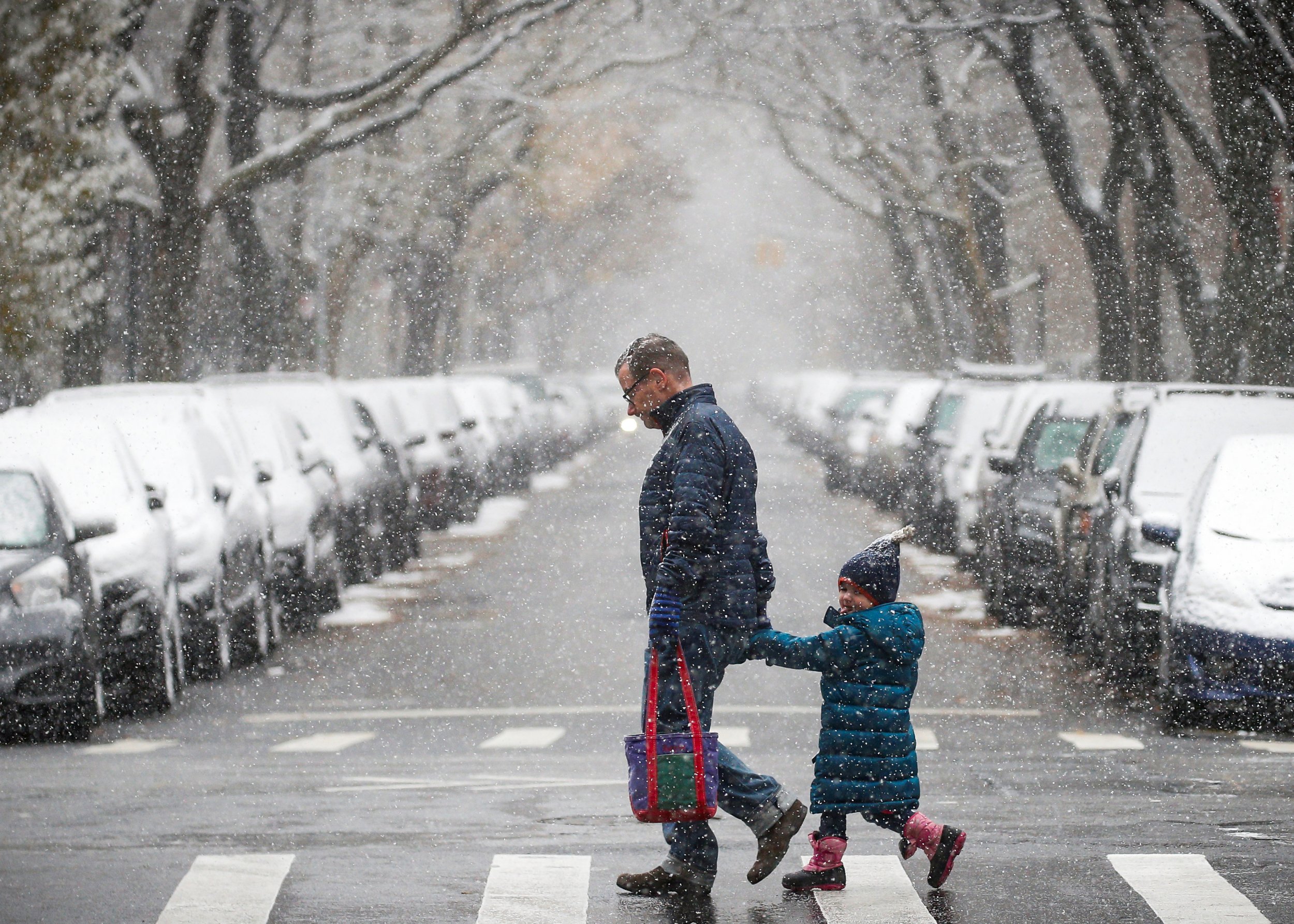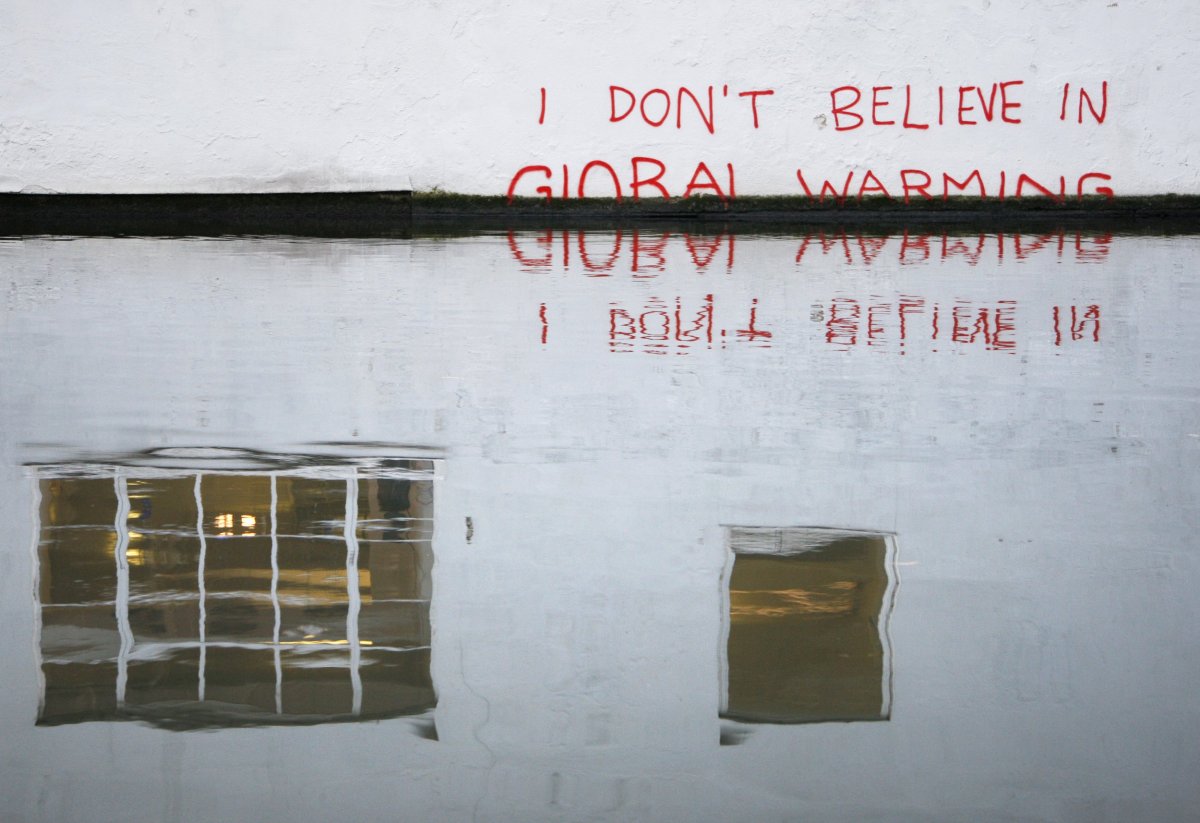
Snowfall in Florida and Texas was a surprise for many across the country. It may have been particularly surprising because of the seeming contrast with globally rising temperatures. But odd snow events don't disprove climate change—for a few simple reasons.
First of all, weather and climate are two very different things.
Weather indicates the short-term weather conditions—which can change minute-to-minute, hour-to-hour, day-to-day and season-to-season, according to NASA. Climate is all the various factors of weather that are averaged over a longer period of time. For instance, climate might be what you expect, like a very hot summer, but the actual weather could be a hot day with a thunderstorm.

That variability in weather day-to-day also makes it difficult to feel the long-term changes that have been happening over the past few decades.
"Because of the large day-to-day variability inherent in the weather, long-term temperature changes themselves may be difficult for humans to subjectively detect," Patrick Brown, a postdoctoral climate scientist at Carnegie Institution for Science, told Newsweek by email. "Interestingly, the more extreme the temperature event, the more influence increasing greenhouse gases likely had."
Also, there is overwhelming evidence of climate change—so overwhelming that it swamps a single event such as snow in Florida.

Carbon dioxide—the greenhouse gas largely responsible for climate change and which results mostly from fossil fuel emissions—has fluctuated in the atmosphere over the past hundreds of thousands of years. The current level, however, has surged since 1950—so much so that for centuries, atmospheric carbon dioxide had never risen above what was last seen a few decades ago, according to NASA. The modern-day warming trend is also new because it is caused by human activity. Carbon dioxide and other greenhouse gases trap heat in the atmosphere, which results in increasing temperatures and melting sea ice at the poles of the Earth.
A few degrees of temperature rising may not be felt directly through temperature. Brown said that increasing greenhouse gases has caused a slow rise in temperature—by around 3 degrees Fahrenheit since the late 1800s in much of the U.S. Day-to-day variations could still be large, though the trend is by a few degrees.
"For example, it can be 25 degrees [Fahrenheit] one day and then 65 degrees [Fahrenheit] a few days later," he said. With the few degrees change, the same fluctuation can still occur, but with perhaps 22 and 62 degrees Fahrenheit. "Thus, cold events will still occur even as the climate warms, they just won't be quite as cold."

Climate change can be felt in ways besides temperature increases as well—especially if you don't live in places where there are extreme and dangerous heat waves regularly. People will also begin to notice the effects of climate change on their environment in various ways, according to Jessica Blunden, a climate scientist for the National Oceanic and Atmospheric Administration.
"Probably the most obvious," Blunden told Newsweek by email, "people who live in certain low-lying coastal areas will notice impacts from sea level rise."
Other examples may appear less direct.
Blunden added that "we may all notice changes in food pricing—both increasing and decreasing—as climate changes optimal agricultural production around the world. There are really countless ways that we'll see the impacts of climate change in the future, both direct and indirect."
Snow may be more common in some places despite warming temperatures, which is an active point of research for climate scientists, according to Blunden. Changes in the Arctic could lead to more polar air "spilling" southward—which would cause cold air to spread down into lower altitudes.
"But, as climate scientists always say, you can't attribute a single event like what happened this past week to climate change," Blunden said. Rather, "we look at the patterns of change over time."
Uncommon Knowledge
Newsweek is committed to challenging conventional wisdom and finding connections in the search for common ground.
Newsweek is committed to challenging conventional wisdom and finding connections in the search for common ground.
About the writer
Sydney Pereira is a science writer, focusing on the environment and climate. You can reach her at s.pereira@newsweekgroup.com.
To read how Newsweek uses AI as a newsroom tool, Click here.








